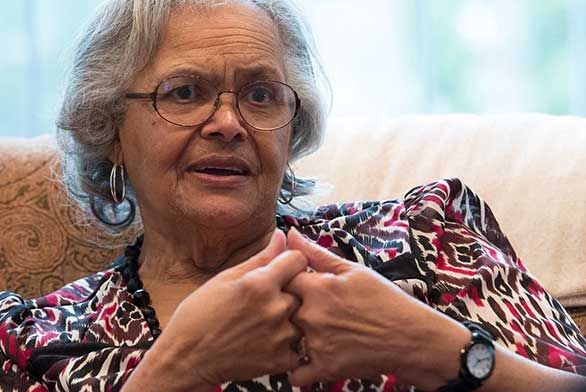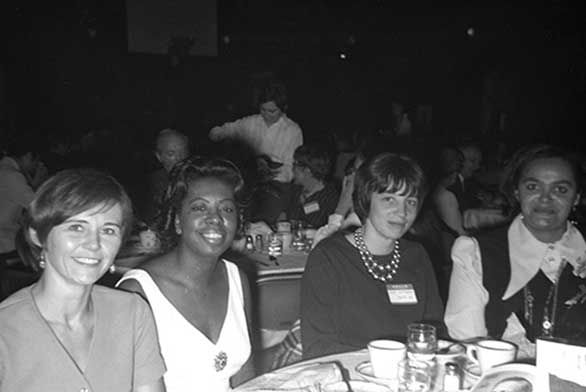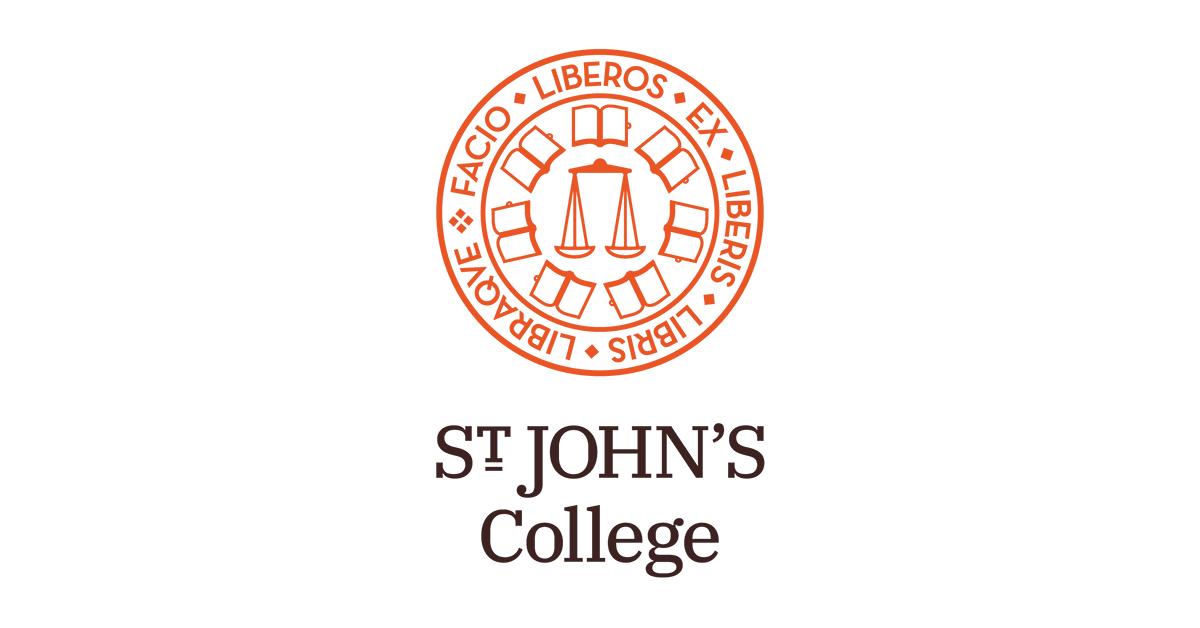Charlotte King (Class of 1959) Recalls Breaking Barriers as One of St. John’s First Black Students
By Kirstin Fawcett (AGI26)
Charlotte King (Class of 1959) knew she wanted to attend St. John’s College when she received a brochure in the mail with pictures of the Annapolis campus. Its towering trees and colonial brick buildings were a far cry from New York City, where King had grown up. And she was a strong student and knew she could keep up with the rigorous New Program.

What King likely didn’t know was that by choosing St. John’s, she would be making history as one of the college’s first students of color. King is today remembered as one of the college’s “Magnificent Seven”—a self-described cohort of seven Black students who enrolled at St. John’s in the 1940s and 50s amid seismic shifts in American civil rights. King, an activist, nonprofit founder, and retired social worker, is also indelibly tied to the school’s legacy of growth and change thanks to her having founded St. John’s first mental health center for students in the 1970s.
King matriculated at St. John’s in 1955. The Supreme Court’s landmark Brown vs. Board of Education ruling had recently ended racial segregation in schools, and St. John’s College—one of the first institutions of higher education to integrate South of the Mason-Dixon line —admitted its first Black male student, Martin Dyer, in 1948, and its first female students in 1951.
King wasn’t new to being a Black student in a mostly white school, having attended a Catholic school in Manhattan’s Italian American East Harlem neighborhood. Still, King had never encountered the Jim Crow South and “had no concept whatsoever about racism, about segregation,” she recalls.
St. John’s wasn’t segregated, but it was experiencing growing pains with its changing demographic that didn’t go unnoticed by King and other people of color on campus. King, for example, was provided a single room her freshman year because the school felt obliged to accommodate parents who did not want their children living with a Black student. Administrators were occasionally overheard using racist language outside the classroom. And Annapolis at the time was a sea of “whites-only” movie theaters, restaurants, and coffee shops, some of which turned King and others away due to their skin color. Many weekends, King sought refuge at classmates’ homes in nearby Baltimore and Washington, D.C., cities with established Black communities and culture.
Student life provided a welcomed respite for King. She felt accepted by the mostly white student body, with some classmates expressing solidarity by pledging to boycott the local businesses that refused her. Together, they immersed themselves in the life of the mind: mandatory Friday night lectures, film screenings in McDowell Hall, and campus coffee shop debates, interspersed with socials and dances in the boathouse. To afford tuition, King was trained to operate the college switchboard, and she also worked in the cafeteria and babysat in town and for tutors.
Johnnies in the late 1950s “were all studious; they were all musical; they were all academically disciplined,” King remembers. “They read voraciously. Some of them were well-traveled.” Many dressed in the style of Greenwich Village beatniks. But not all were destined to complete the Program: Out of King’s entering class—around 80-some students, she estimates—13 remained all four years and graduated on time. (In typical Johnnie fashion, 12 of them wound up marrying each other.) King, who remembers enjoying Program readings by political philosophers such as Hobbes and theologians like St. Augustine, distinguished herself enough academically at St. John’s that she was selected to deliver a speech to her fellow graduates during a commencement celebration known as “Class Day.”
King returned to New York after completing her BA and went on to earn a master’s in social work at Fordham University. She worked with local social service and mental health agencies until fate intervened to bring her back to St. John’s after 11 years in the form of a phone call from Barbara Leonard, St. John’s first woman tutor and female assistant dean.
Leonard, at the time, was the Annapolis college’s dean of women, and St. John’s needed someone to fill in for her and supervise its female students during her upcoming sabbatical to India. She inquired if King was interested in the job. So, after more than a decade away from Annapolis, King returned with a young daughter in tow and took up residence in the basement of women’s dormitory Campbell Hall (today, a residence hall for students and home to the bookstore and café, known as Edensword Hall).

With a master’s in social work and years of accumulated expertise, King proceeded to not only fill in for Leonard but to establish the school’s first mental health center while working part-time for local social service institutions in Annapolis. She re-settled into the rhythms of campus life as a Johnnie staffer, raising daughter Rachel among the children of tutors. Two of King’s close friends from St. John’s lived in town, and their offspring were all the same age and attended the neighboring Key School together.
Eventually, King purchased a home locally and left her post at the college to work in nonprofit leadership positions in the Baltimore and D.C. region, including as the executive director of the Catholic Charities in the Archdiocese of Washington, D.C. during the height of the 1980s AIDS crisis. In 2004, four years after retiring from Maryland social service institutions, King received an Award of Merit from the St. John’s College Alumni Association.
One might joke that you can take the Johnnie out of St. John’s, but you can’t ever take St. John’s out of the Johnnie. The same has proved true for King, who moved to Lewes, Delaware, in 2000, and, in the past 10 years, delved into community activism with a decidedly Program-esque twist. As the founder of a grassroots nonprofit group called the Southern Delaware Alliance for Racial Justice (SDARJ), King has gained regional recognition and awards for orchestrating roundtable community discussions on topical books like Michelle Alexander’s The New Jim Crow. “I think that’s what made them successful—we started with the text,” King says. “We continued reading books, just talking about the books. And then it grew.” “Grew” is an understatement, considering that the SDARJ has since expanded to include town halls, scholarships, legal activism, and a related magazine and film festival, among other programming.
Just recently, King—now in her late eighties—downsized her attic and relinquished her library of decades-old St. John’s Program texts. But she doesn’t need the physical books themselves, as the true heart of the Program lies in the conversations she continues to inspire among her community.

